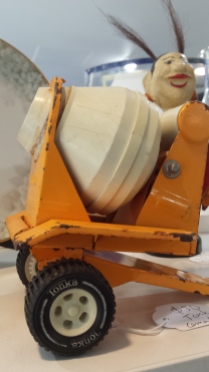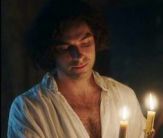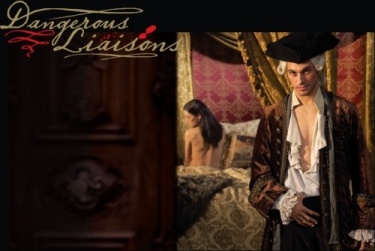Today is my last day of leave after taking a couple of months off my day job. Technically I guess I still have the weekend, but Monday will see me up and showered and back in the office at an unconscionable time of day, instead of stretched out on my couch in my pyjamas with my laptop or a book…
I have very conflicted thoughts about what I’ve achieved since the end of January.
I never EVER get as much done on these sabbaticals as I want to.
I don’t have a finished first draft.
In fact, in some ways I’m much further off a first draft, having completely torn apart the first 50,000 words of the first draft I’d previously created.
And it’s a constant struggle to balance out the voices of doubt and self-sabotage with an objective, let alone positive, dialogue with myself about what I have or haven’t achieved. For example, you may notice I haven’t put up any blog posts in the time I’ve had off. Why? Because it feels incredibly dishonest to be be blithely blogging about doing a thing when I’m deeply questioning if I am actually even doing that thing. Have I written enough? Have I spent enough time brainstorming/world-building/deepening character/developing backstory? Do I have what it actually takes to write a novel? I mean, sure, I’ve done it once, but what if it was a fluke?
About the only thing I draw hope from is that SO MANY writers seem to go through exactly this kind of mess, and it seems like the only thing you can do is trust in the process and keep going. “Trust in the process” is a big ask, though, because it’s very difficult to see what there is to trust. Literally all I’ve got is that some of the authors I most admire are honest about passing through this phase of the creative process.
Ugh.
So, partly by way of doing some self validation and partly in the hope this might act as breadcrumbs for someone else wandering around in this horrible, uncertain, formless grey space, here’s some stuff I have done, to balance out the abject lack of completed first draft sitting in my documents folder.
- Loads of character backstory. Some of my characters have changed dramatically. They’ve deepened, become more interesting and more whole. Some of them were mere ciphers and are now awesome.
- I have actually written some scenes I am actually pretty happy with, actually.
- I have nutted out a plot. It’s not completely fleshed out, and my ending is still hellishly hazy. But I have a lot more structure to this story than I previously did. And, TBH, that’s actually the main thing I wanted to achieve with this time off. It’s really easy to downplay the sheer amount of thinking/dreaming/brainstorming time that goes into creating plot (at least for someone like me – I am not a plotter) and one of the reasons I took this time was so I could have just days and days of staring into space and trying out ideas and abandoning them and trying out other ideas… Discarding so many ideas. Oh yeah. *sighs wearily* It’s all part of the process.
- I’ve made huge headway into my TBR pile. “Wait. What?” I hear you say.* “That’s not writing! Why are you reading when you should be typing words???!” But reading is super important. Especially reading stuff you enjoy and that feeds your muse. When I am all dried up and wrung out and exhausted by my lack of progress and jaded with my lack of creativity and sick to freaking death of my stupid WIP, reading reminds me what I love about stories, and about what kind of story I want to write. Falling in love with other people’s characters and marvelling at other writers’ clever plot twists and getting lost in other authors’ magnificent world-building helps me rekindle those exact sparks in my own work.
So, there you go. Not a lot of wordage. No shiny first draft yet. (In fact, right now, I’ve retreated from the idea of even producing a first draft at this point, and embraced the concept of a zero draft, as outlined in this fab thread from Fonda Lee, author of Jade City)
The one consistently reliable way to overcome “writer’s block” is to lower your standards. I mean really lower them. Already low, you say? GO LOWER. E.g: what I’m writing now can’t even be called First Draft. It’s a Zero Draft. You know what, let’s call it Negative Draft. (1/?)
— Fonda Lee (@FondaJLee) March 20, 2019
But in so many respects I’m way further along than I was back in January and starting to fall back in love with my story again, I think.
Just gotta keep trusting in this amorphous thing called The Creative Process and … keep on swimmin’.**

* When I say “you” I mean “me”.
**And buy lotto tickets. So many lotto tickets.








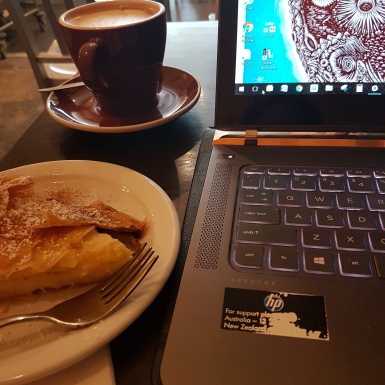





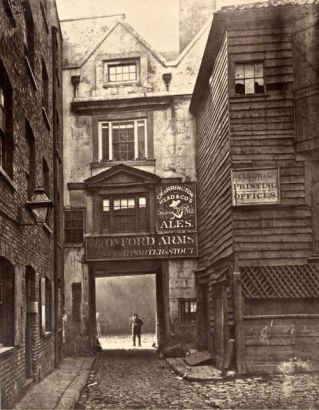











 This year at Conflux we decided to do something a bit different with the writing workshops and run them throughout the weekend instead of all on the first day (Friday), which is how we’ve done it previously. One thing I found is – probably due to the interactive nature of workshops – these are a really good forum to hook up with other people at the convention. I managed to get in three workshops. (Although one was in two parts and probably counts as two.)
This year at Conflux we decided to do something a bit different with the writing workshops and run them throughout the weekend instead of all on the first day (Friday), which is how we’ve done it previously. One thing I found is – probably due to the interactive nature of workshops – these are a really good forum to hook up with other people at the convention. I managed to get in three workshops. (Although one was in two parts and probably counts as two.)


